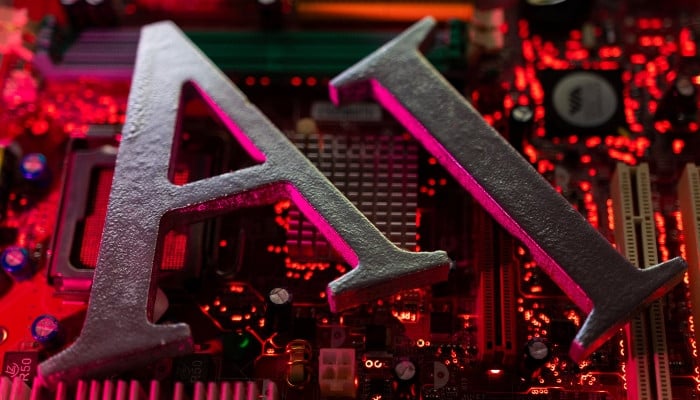
AI letters are placed on computer motherboard in this illustration taken, June 23, 2023. — Reuters
#revolution #running #power
San Francisco: In the race for AI supremacy, US tech giants have the capital and the chips, yet their ambitions now face a new hurdle: electricity.
Microsoft CEO Satya Nadella admitted on a recent podcast with OpenAI chief Sam Altman that “the biggest problem we have now is not a compute glut, but it’s power and … the ability to bring buildings closer to power faster.”
“So if you can’t do that, you might have a bunch of chips sitting in inventory that I can’t plug into,” Nadella added.
Echoing the dot-com frenzy of the 1990s to build Internet infrastructure, today’s tech companies are spending unprecedented amounts to build the silicon backbone of the revolution in artificial intelligence.
Google, Microsoft, AWS (Amazon), and Meta (Facebook) are drawing on their massive cash reserves to spend around $400 billion in 2025 and even more in 2026.
All that cash has helped clear an initial hurdle: getting the millions of chips needed for the computing power race, and tech companies are ramping up their in-house processor production as they try to catch up to world leader Nvidia.
These will go into the racks that fill massive data centers — which also use vast amounts of water for cooling.
Building large-scale data warehouses takes an average of two years in the United States. It takes five to 10 years to bring new high-voltage power lines into service.
A wall of energy
“Hyperscalers,” as the big tech companies are called in Silicon Valley, saw the wall of energy coming.
A year ago, Virginia’s main utility provider, Dominion Energy, already had a data center order book of 40 gigawatts—the equivalent of the output of 40 nuclear reactors.
The company recently announced that the world’s largest cloud computing center should deploy its capacity in Virginia.
Already blamed for swelling household electricity bills, data centers in the United States could account for 7% to 12% of national consumption by 2030, up from 4% today, according to various studies.
But some experts say the estimate could be inflated.
“Both utilities and tech companies have an incentive to accept forecasts of rapid growth for electricity use,” Jonathan Coomey, a prominent UC Berkeley expert, warned in September.
As with the Internet bubble of the late 1990s, “many of the data centers that are talked about and proposed and in some cases even announced will never be built.”
Emergency coal
According to Morgan Stanley, if the predicted growth comes to fruition, this could create a shortfall of 45 gigawatts by 2028. That’s equivalent to the consumption of 33 million American households.
Coal plant closures have been delayed, despite coal being the most climate-friendly energy source.
And natural gas, which powers 40% of data centers worldwide, according to the International Energy Agency, is seeing renewed favor because it can be deployed faster.
In the US state of Georgia, where data centers are multiplying, a utility has applied for permission to install 10 gigawatts of gas-fired generators.
Some suppliers, as well as Elon Musk’s startup Zee, have reached out to buy used turbines from overseas to rapidly expand capacity. Even recycling aircraft turbines, an old niche solution, is gaining traction.
Interior Secretary Doug Burgum argued in October, “The real existential threat right now is not a limitation of climate change. It’s the fact that if we don’t have enough power, we could lose the AI arms race.”
Nuclear, solar and space?
Tech giants are quietly reducing their climate commitments. Google, for example, pledged to be net-zero carbon emissions by 2030 but removed that pledge from its website in June.
Instead, companies are promoting long-term projects.
Amazon is tackling nuclear revival with small modular reactors (SMRS), a so-far experimental technology that would be easier to build than conventional reactors.
Google plans to restart a reactor in Iowa in 2029. And the Trump administration announced in late October an $80 billion investment to begin construction on ten conventional reactors by 2030.
Hyperscalers are also investing heavily in solar power and battery storage, particularly in California and Texas.
The Texas grid operator plans to add about 100 gigawatts of capacity by 2030 from these technologies alone.
After all, both Elon Musk, through his Starlink program, and Google have proposed putting solar-powered chips into space. Google plans to conduct the test in 2027.






